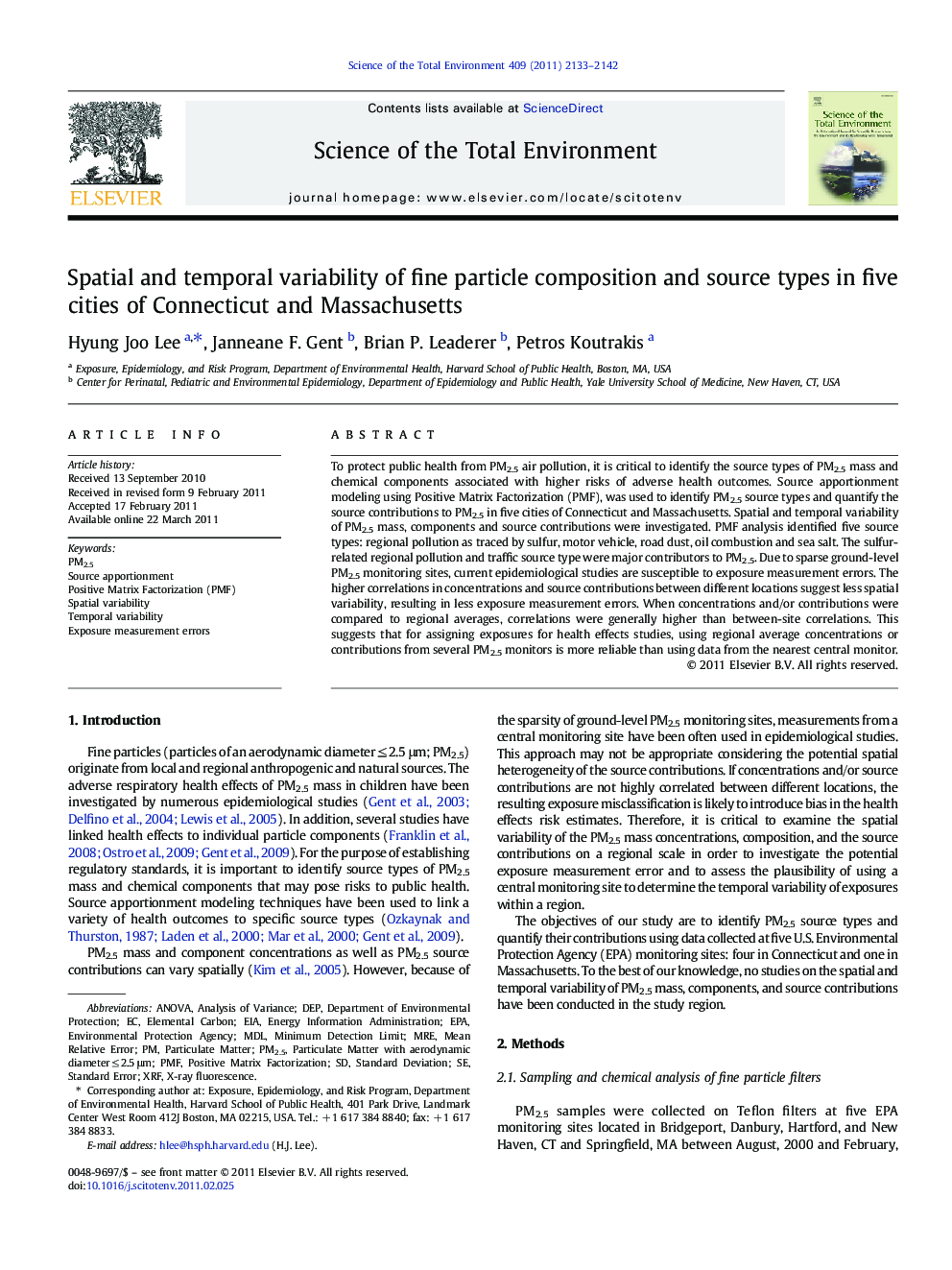| کد مقاله | کد نشریه | سال انتشار | مقاله انگلیسی | نسخه تمام متن |
|---|---|---|---|---|
| 4430481 | 1619851 | 2011 | 10 صفحه PDF | دانلود رایگان |

To protect public health from PM2.5 air pollution, it is critical to identify the source types of PM2.5 mass and chemical components associated with higher risks of adverse health outcomes. Source apportionment modeling using Positive Matrix Factorization (PMF), was used to identify PM2.5 source types and quantify the source contributions to PM2.5 in five cities of Connecticut and Massachusetts. Spatial and temporal variability of PM2.5 mass, components and source contributions were investigated. PMF analysis identified five source types: regional pollution as traced by sulfur, motor vehicle, road dust, oil combustion and sea salt. The sulfur-related regional pollution and traffic source type were major contributors to PM2.5. Due to sparse ground-level PM2.5 monitoring sites, current epidemiological studies are susceptible to exposure measurement errors. The higher correlations in concentrations and source contributions between different locations suggest less spatial variability, resulting in less exposure measurement errors. When concentrations and/or contributions were compared to regional averages, correlations were generally higher than between-site correlations. This suggests that for assigning exposures for health effects studies, using regional average concentrations or contributions from several PM2.5 monitors is more reliable than using data from the nearest central monitor.
Research highlights
► PMF analysis identified five source types of PM2.5.
► The regional sulfur and traffic were major contributors to PM2.5.
► Regional averages from several PM2.5 monitors are more reliable than data from the nearest central monitor for health effects studies.
Journal: Science of The Total Environment - Volume 409, Issue 11, 1 May 2011, Pages 2133–2142